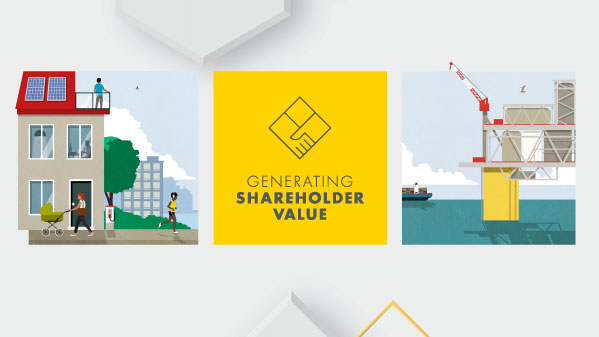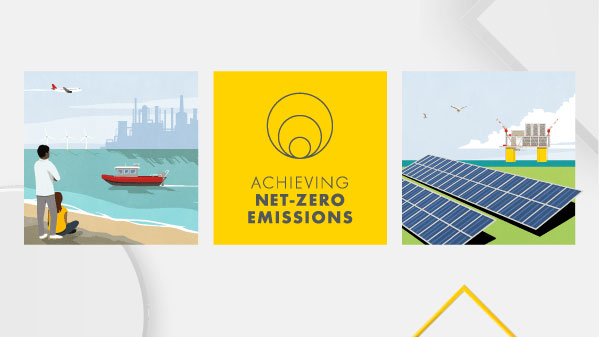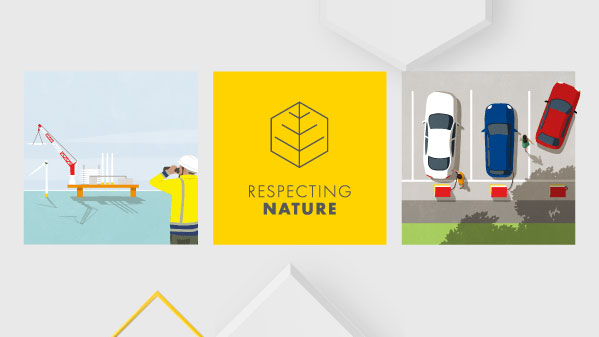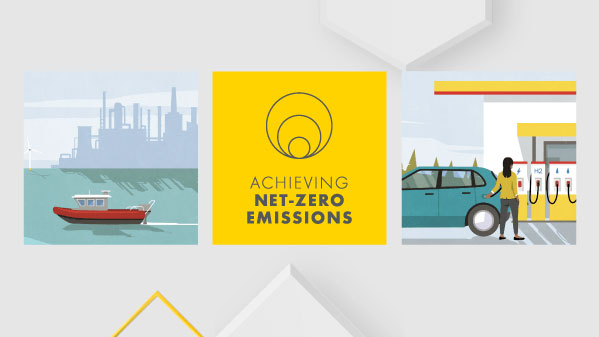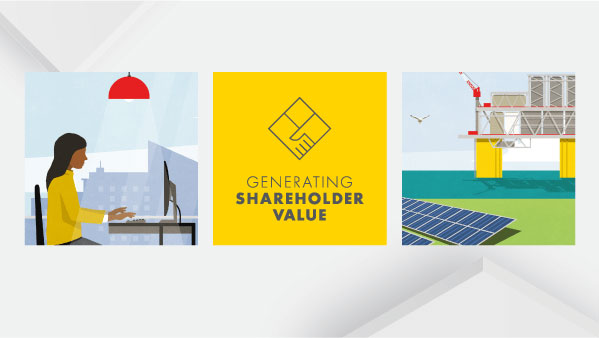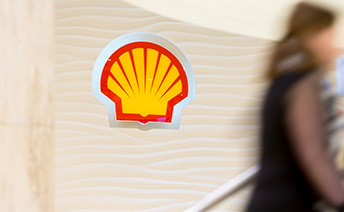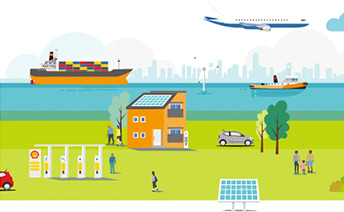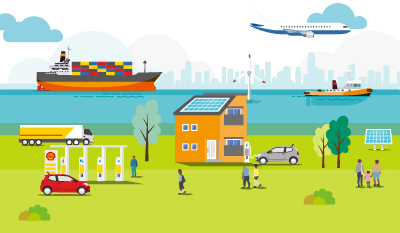Other regulatory disclosures
GHG emissions and energy consumption data – information provided in accordance with UK regulations
Data in this section are consolidated using the operational control approach. Under this approach, we account for 100% of the GHG emissions and energy consumption in respect of activities where we are the operator, irrespective of our ownership percentage.
Reporting on this operational control basis differs from that applied for financial reporting purposes in the “Consolidated Financial Statements”. We acknowledge the strong preference of the UK’s Financial Reporting Council (FRC) for companies to report the GHG emissions and energy consumption data using the financial consolidation boundary and are working on including the data and information on this boundary in our Annual Report in the future.
See Basis of preparation – absolute emissions.
|
2022 |
2021 |
2020 |
||||||||||
|---|---|---|---|---|---|---|---|---|---|---|---|---|---|
Total global direct (Scope 1) [A] |
51 |
60 |
63 |
||||||||||
UK including offshore area [B] |
1.7 |
1.7 |
2.0 |
||||||||||
Market-based |
|
|
|
||||||||||
Total global energy indirect (Scope 2) [C] |
7 |
8 |
8 |
||||||||||
UK including offshore area |
0 |
0 |
0 |
||||||||||
Location-based |
|
|
|
||||||||||
Total global energy indirect (Scope 2) [D] |
8 |
9 |
10 |
||||||||||
UK including offshore area |
0.04 |
0.05 |
0.06 |
||||||||||
Intensity ratio in tonnes per tonne |
|
|
|
||||||||||
Intensity ratio of all facilities [E] |
0.27 |
0.27 |
0.25 |
||||||||||
|
|||||||||||||
The activity data used to calculate GHG intensity ratios at a portfolio level shown in the table above are reported on an operational control basis. As a result, they are not directly comparable with the production data reported elsewhere in this Report, which are reported on a financial control basis. The table below shows the numbers used in the calculation of the intensity:
Energy use in our operations
The energy consumption data provided below comprise own energy, generated and consumed by our facilities, and supplied energy (electricity, steam and heat) purchased by our facilities for our use.
Energy consumption data reflect primary (thermal) energy (e.g. the energy content of fuels used to generate electricity, steam, heat, mechanical energy, etc.). This includes energy from renewable and non-renewable sources. Own energy generated was calculated by multiplying the volumes of fuels consumed for energy purposes by their respective lower heating values. Own energy generated that was exported to third-party assets or to the power grid is excluded. Thermal energy for purchased and consumed electricity was calculated using actual electricity purchased multiplied by country-specific electricity generation efficiency factors (from IEA statistics). Thermal energy for purchased and consumed steam and heat was calculated from actual steam/heat purchased multiplied by a supplier-specific conversion efficiency, or a generic efficiency factor where supplier-specific data were not available.
Our energy consumption decreased from 223 billion kilowatt-hours (kWh) in 2021 to 199 billion kWh in 2022, in line with the decrease in our Scope 1 and 2 GHG emissions. Around 1% of the energy we used in 2022 for our operations came from low-carbon and renewable sources.
|
2022 |
2021 |
2020 |
|---|---|---|---|
Own energy generated and consumed |
|
|
|
Total energy generated and consumed |
168 |
189 |
205 |
UK including offshore area |
6.1 |
6.2 |
7.6 |
Purchased and consumed energy |
|
|
|
Total purchased and consumed energy |
31 |
33 |
36 |
UK including offshore area |
0.2 |
0.2 |
0.2 |
Energy consumption |
|
|
|
Total energy consumed |
199 |
223 |
241 |
UK including offshore area |
6.3 |
6.4 |
7.8 |
In 2022, we implemented a variety of measures to reduce the energy use and increase the energy efficiency of our operations.
Examples of some of the principal measures taken in 2022 (with estimated total savings of around 1,155 million kWh in 2022):
- At our GTL asset in Qatar, we completed several projects to reduce energy use and improve efficiency, e.g. by making improvements to catalyst performance which resulted in reduced generation of off-gas leading to lower energy consumption.
- At our Gulf of Mexico operations in the USA, we have implemented a project to reduce energy use and improve efficiency by using waste heat to generate steam.
- At our Upstream operations in the UK, we have completed several projects to reduce energy use and improve efficiency, for example by implementing an online model at Shearwater to optimise fuel gas usage.
- At our Scotford site in Canada, we have implemented several projects to reduce energy use and improve efficiency, for example by using analysers to optimise fuel usage.
- At our Geismar site in the USA, we have implemented several projects to reduce energy use and improve efficiency, for example by making changes to how some equipment operates.
- At our QGC operations in Australia, we implemented several projects to reduce energy use and improve efficiency, for example by introducing a CO2 / energy performance dashboard for control room operators, which allowed operators to see gap to potential in efficiency savings based on real time operating data.
Examples of some of the principal measures taken in 2021 are listed below (with estimated total savings of around 675 million kWh in 2021):
- At our Scotford upgrader facility in Canada, we completed several projects to minimise energy use and improve efficiency, for example by installing new equipment and making changes to how some equipment operates.
- At our Gannet asset in the UK, we completed a project to enhance the efficiency of the fuel gas compressors by fine-tuning their performance to the specific needs of the platform.
- At our Jurong Island site in Singapore, we installed a second stage flash vessel to recover the heat for reuse in other equipment, and completed a project to minimise power consumption by one of the incinerators.
- At our Rheinland site in Germany, we completed several projects to reduce energy use and improve efficiency, for example, by installing more efficient equipment and changing maintenance schedules to improve efficiency.
- At our Bukom site in Singapore, we completed a project to reduce the consumption of natural gas in flare purge.
- At our Scotford refinery and chemical site in Canada, we completed several projects to reduce energy use and improve efficiency, for example, by enabling the reduction of steam usage.
- At our QGC operations in Australia, we implemented a project to reduce power requirements for gas compression.
The targets in this “Our journey to net zero” section, including those relating to the NCI targets, are forward-looking targets based on management’s current expectations and certain material assumptions and, accordingly, involve risks and uncertainties that could cause actual results, performance or events to differ materially from those expressed or implied herein.
EU Taxonomy Regulation
The EU Taxonomy Regulation is a classification system that translates the European Union’s environmental objectives into criteria for determining when an economic activity can be considered environmentally sustainable for investment purposes. As a UK company with its registered office and headquarters in London, Shell plc is not currently subject to the Taxonomy Regulation. Nevertheless, we elect to report against the taxonomy voluntarily because we recognise the importance of increasing transparency about how companies are progressing in the energy transition, even if the regulation is evolving and not yet mature.
For further information, see “Supplementary Information – EU Taxonomy Disclosure”.

